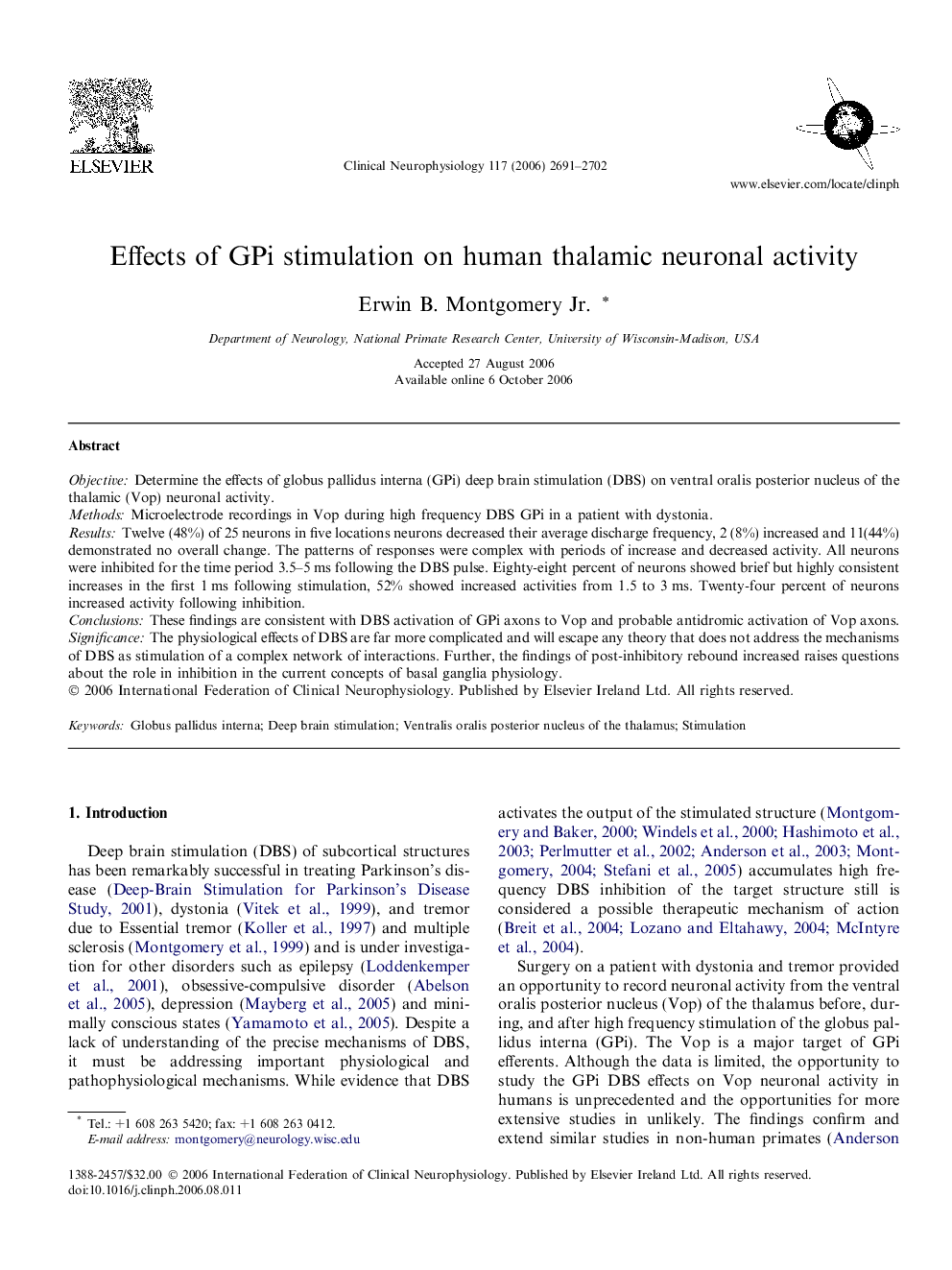| Article ID | Journal | Published Year | Pages | File Type |
|---|---|---|---|---|
| 3048337 | Clinical Neurophysiology | 2006 | 12 Pages |
ObjectiveDetermine the effects of globus pallidus interna (GPi) deep brain stimulation (DBS) on ventral oralis posterior nucleus of the thalamic (Vop) neuronal activity.MethodsMicroelectrode recordings in Vop during high frequency DBS GPi in a patient with dystonia.ResultsTwelve (48%) of 25 neurons in five locations neurons decreased their average discharge frequency, 2 (8%) increased and 11(44%) demonstrated no overall change. The patterns of responses were complex with periods of increase and decreased activity. All neurons were inhibited for the time period 3.5–5 ms following the DBS pulse. Eighty-eight percent of neurons showed brief but highly consistent increases in the first 1 ms following stimulation, 52% showed increased activities from 1.5 to 3 ms. Twenty-four percent of neurons increased activity following inhibition.ConclusionsThese findings are consistent with DBS activation of GPi axons to Vop and probable antidromic activation of Vop axons.SignificanceThe physiological effects of DBS are far more complicated and will escape any theory that does not address the mechanisms of DBS as stimulation of a complex network of interactions. Further, the findings of post-inhibitory rebound increased raises questions about the role in inhibition in the current concepts of basal ganglia physiology.
